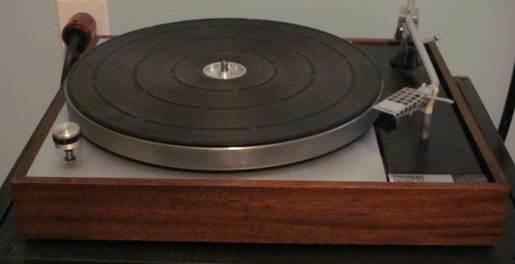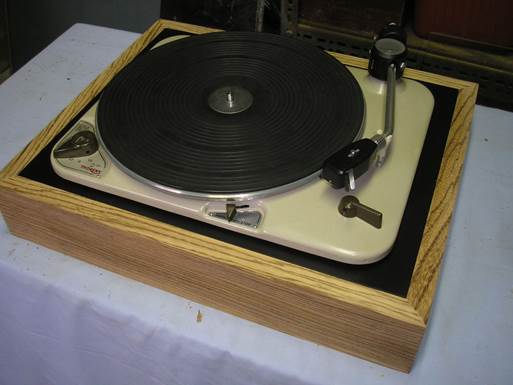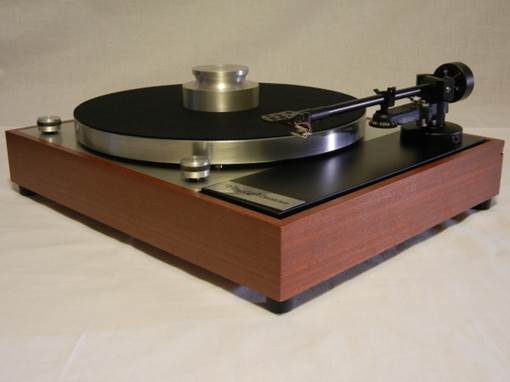We remember the classic turntable
that arguably launched the vinyl revolution, Thoren’s beautifully built TD 150…
To show that there is nothing new under the
sun, here is a belt drive turntable with a weak motor and a heavy platter, an
underslung counterweight and a lid that you had to pay extra for, just like the
ones still on sale today!
It may seem familiar, but the Thorens TD
150 seen here first went on sale in 1965, that’s nearly fifty years ago. Then,
as now, the thing that set in apart from most other turntables was a suspended
sub-chassis, a floating platform inside which holds the platter and arm base
rigidly together, but which otherwise moves freely in space with the aim of
providing prefect isolation from external vibrations. The TD 150 was not first
turntable to be built like this, but it was the first to sell in large numbers,
thanks to its fine sound quality and remarkably low price.
Many imitators followed in the next decade
and I think it’s not too unfair at this point to remark on the physical and
engineering similarity to the mighty Linn Sondek LP12, no less. And don’t
forget Ariston, STD, Systemdek, Rovolver, et al., either!

Thorens
TD 150 seen here first went on sale in 1965
Before the suspended sub-chassis,
turntables had been typically constructed on a pressed steel plate to which the
various items – arm, bearing, motor, etc. – were all attached. The motor was
usually mounted on rubber bushings in an attempt to stop the vibrations it
produced reaching the record and stylus but these were largely bypassed by the
idler drive mechanisms which were popular at the time.
The complete turntable unit was sometimes
mounted on coil springs too, to try to block some the very low frequency
vibrations that may otherwise spoil the sound, Thorens offered a machine of
this type in the early sixties, the TD 135, which was very much a typical
design of this period – you can image how slim, neat and modern the TD 150 must
have looked in comparison.

Thorens
TD 135
In the TD 150, the platter floats softy
just above the top plate, and when it is moved the arm and the black arm board
beneath it move with it together. It is essential in the design of any
turntable that the relationship between the axis of the arm and the platter is
constant and in the TD 150 design this is achieved by two shallow steel
channels which are spot welded together into a ‘t’ shape, the cross of the ‘t’
holding the arm board above. This assembly is suspended on three compressed
coil springs located radially movement only loosely constrained. The motor is
mounted solidly to the plinth and a flat rubber belt too the platter acts as a
mechanical low-pass filter which transmits the drive, but blocks the bulk of
the vibrations. Belt drive turntables were not new in 1965, but even so it was
still an unusual feature.
Because of the high quality main bearing
and the absence of any turntable driven automatic function, a very small and
light motor, similar to those found in electric clocks, was used. Being a
synchronous design its speed was locked to the mains supply frequency, not its
exact voltage. The motor required around 115V, so for those examples sold in
Europe a resistor was fitted to drop the excess voltage – if your TD 150 smells
slightly of burning when first switched on then dust harmlessly burning off
this resistor us likely to be the cause. Conversion of a USA-spec example is
not easy though different diameter pulley is needed but since this is solidly
bonded to the motor shaft a whole new motor would still be required.

TD
150 design this is achieved by two shallow steel channels which are spot welded
together into a ‘t’ shape, the cross of the ‘t’ holding the arm board above
The TD 150 was available in four versions,
as a motor unit only (no suffix), with a Thorens TP 13 arm but no plinth
(suffix A), with a plinth but no arm (suffix B) or complete and ready to run
except for a cartridge (suffix AB). In the case of the B version, the blank arm
board could be drilled anywhere to suit most arms, but the machine’s small size
precluded the use of the popular SME 3009 unless an SME plinth was used as
well.